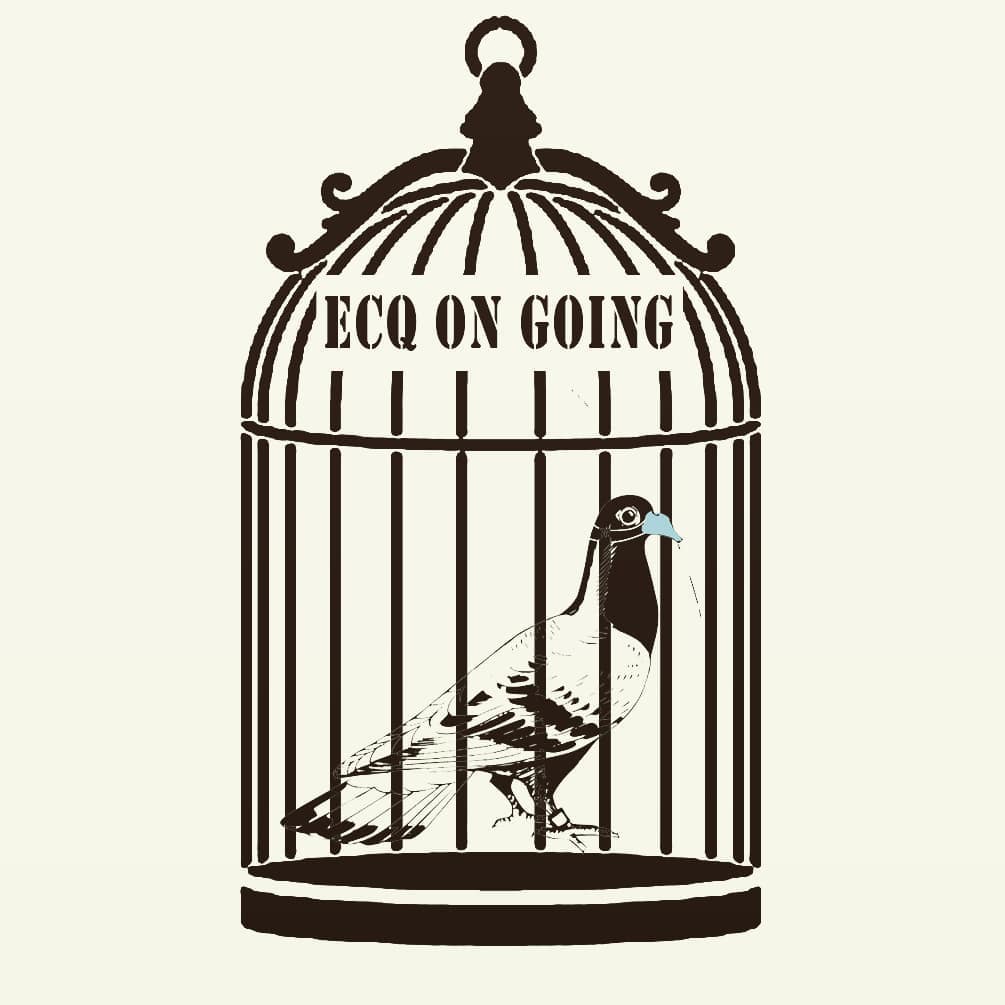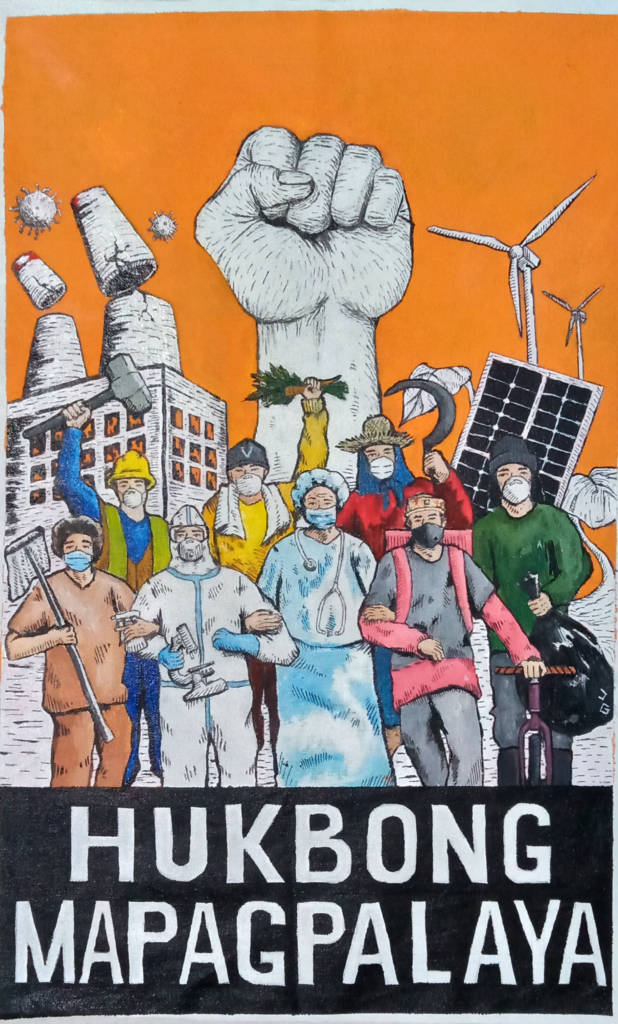Since November last year until early March, we have been deeply involved with the “Alas ng Bayan”, a collaborative art project organized by the Institute for Climate and Sustainable Cities, the Constantino Foundation, and 350 Pilipinas which seeks to introduce and inject history and feminism as fundamental elements in the way young people respond to the worsening state of national forgetting and the climate crisis.
In the middle of it all was one of 350 Pilipinas’ long-time volunteers, John Erhard Guarin, or Johnny to his fellow volunteers, who for the most part of the first quarter of this year spent his time balancing between his job cycling for a mobile food delivery service, and his passion as an artist raising awareness on the connections between women, history, and climate justice through his paintings which were featured in the Alas Ng Bayan exhibit.

“ECQ” by Johnny Guarin
Unfortunately, what was supposed to be a big Women’s Month celebration of Alas ng Bayan in March came to a sudden halt with the government’s announcement imposing a lockdown (technically called an enhanced community quarantine or ECQ) as a drastic measure to prevent the spread of COVID-19.
Reacting to the lockdown and the abrupt end of ‘normal life’’ as we know it, Johnny started making art. Among the first pieces he produced was a drawing aptly called ECQ which details a bird on a cage wearing a face mask, which for me highlights how the lockdown impacts our very nature as mobile, social, and communal creatures.
This was followed by a series of designs that he contributed to illustrate the #JustRecovery principles – a united global response to the COVID-19 pandemic ensuring a just recovery and transition to a better future for those most in need in the wake of this crisis.
In the past weeks, our collective of climate activists here in the Philippines established a virtual space to come together to reflect on the rapid changes happening around us in light of the pandemic. It’s a venue where we talk about our worries and how it impacts us so that we can identify pathways to navigate ourselves into an uncertain future.
It was in those conversations that Johnny reached out to me to pitch an idea to paint an artwork in time for Labor Day. The painting is meant to honor the valuable contributions of the frontliners and workers who are risking the most in fighting the pandemic and in keeping society afloat in this time of crisis.
As soon as I got a photo of his painting, I sent over some questions to understand more about his art and how it plays an important role in challenging us to hope and act in these challenging times.


